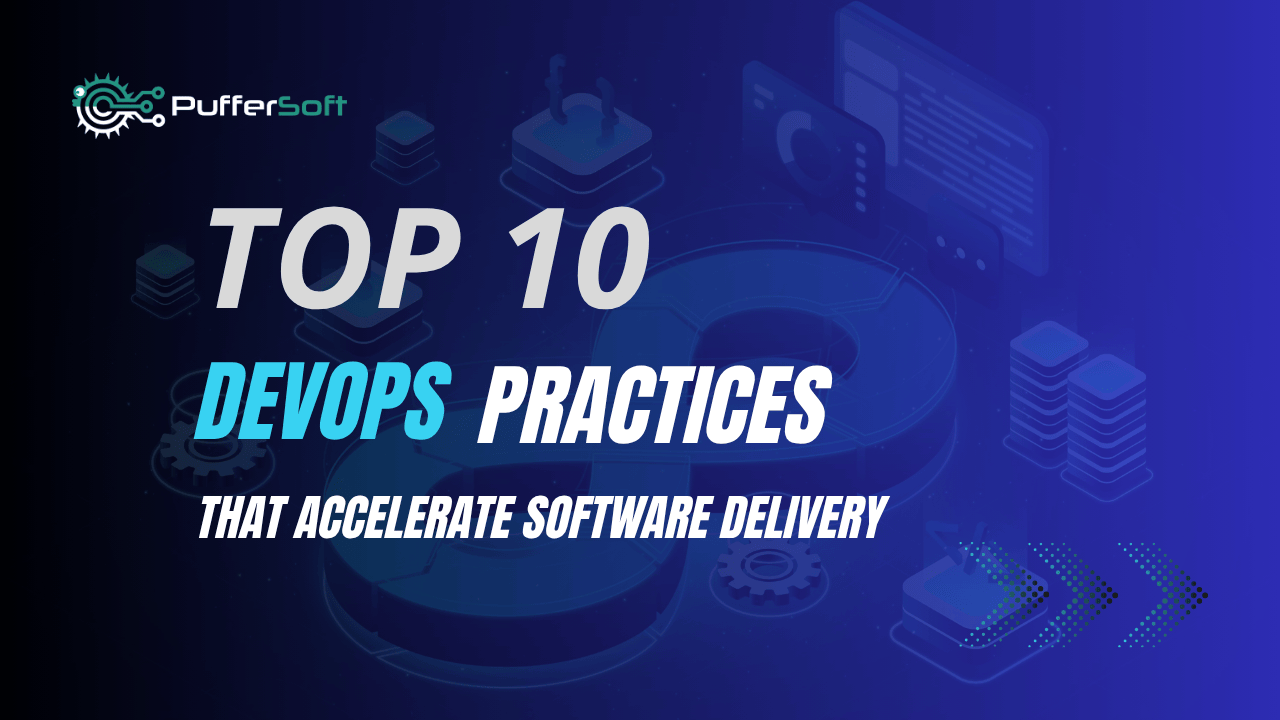
Top 10 Best DevOps Practices That Accelerate Software Delivery
In today’s fast-paced digital landscape, businesses are under constant pressure to innovate faster, deliver reliable software, and respond to market demands in real time. This is where DevOps a culture of collaboration between development and operations plays a critical role.
Implementing the best DevOps practices not only enhances software delivery speed but also ensures stability, scalability, and continuous improvement across the product lifecycle. In this article, we’ll explore the top 10 DevOps practices that help teams build, test, and deploy software faster while maintaining top-tier quality.
1. Embrace Continuous Integration (CI) and Continuous Delivery (CD)
Continuous Integration and Continuous Delivery are at the heart of successful DevOps workflows.
- Continuous Integration (CI) ensures developers merge code frequently into a shared repository, allowing automated builds and tests to detect issues early.
- Continuous Delivery (CD) automates the release process, enabling rapid and reliable deployments to production.
This practice reduces manual errors, speeds up delivery cycles, and improves code quality.
2. Infrastructure as Code (IaC)
Infrastructure as Code allows teams to manage infrastructure through code rather than manual processes. Tools like Terraform, AWS CloudFormation, and Ansible enable infrastructure automation, version control, and repeatability.
By adopting IaC, teams can spin up environments on demand, maintain consistency across deployments, and reduce human errors making it one of the best DevOps practices for scalable environments.
3. Implement Automated Testing
Automation is the backbone of DevOps efficiency. Automated testing ensures that every change made to the codebase is validated before moving to production. From unit testing and integration testing to UI testing, automation helps identify bugs early and maintain application stability. Popular tools include Selenium, JUnit, and TestNG.
4. Use Containerization and Orchestration
Containerization technologies like Docker and orchestration tools like Kubernetes streamline application deployment across environments. They package applications and dependencies together, ensuring that they run consistently in development, testing, and production environments. This approach simplifies scaling, increases portability, and reduces environment-specific issues and it is one of the main steps in the best devops practices.
5. Adopt Continuous Monitoring and Logging
Monitoring is vital for identifying performance issues before they impact users. By integrating tools such as Prometheus, Grafana, ELK Stack (Elasticsearch, Logstash, Kibana), or AWS CloudWatch, teams can continuously monitor application performance, infrastructure health, and system metrics. Logging ensures transparency and quick resolution of production incidents.
6. Foster a Collaborative DevOps Culture
DevOps is not just about tools it’s about culture. Encourage collaboration between development, operations, and QA teams. Regular communication, shared goals, and cross-functional accountability build trust and accelerate issue resolution. By integrating the best DevOps practices, a strong DevOps culture empowers teams to take ownership and enhance delivery pipelines continuously
7. Implement Security at Every Stage (DevSecOps)
Integrating security practices into DevOps commonly known as DevSecOps ensures vulnerabilities are caught early in the development cycle. Automated security scans, code reviews, and compliance checks should be part of every pipeline. Tools like Aqua Security, Snyk, and Trivy help maintain security without slowing down delivery.
8. Measure and Optimize Performance Continuously
Among the best DevOps practices, tracking metrics like deployment frequency, lead time, MTTR, and change failure rate helps accurately evaluate team performance. Using these insights, teams can fine-tune their pipelines, improve reliability, and make data-driven decisions.
9. Automate Deployment and Rollbacks
Automated deployment pipelines reduce human error and ensure faster releases. Equally important are automated rollback mechanisms that revert to stable versions when failures occur. Tools like Jenkins, GitLab CI/CD, and ArgoCD make deployment and rollback automation seamless.
10. Invest in Continuous Learning and Improvement
The world of DevOps evolves rapidly. Teams must regularly train, experiment, and adopt new technologies and best devops practices to stay ahead. Encouraging continuous learning and post-incident reviews helps strengthen team capabilities and keeps processes agile.
Conclusion
Adopting these best DevOps practices can drastically improve your software delivery speed, system reliability, and overall business agility. From automation and monitoring to cultural transformation, every element contributes to delivering value faster and more efficiently.
At PufferSoft, we help organizations design, implement, and optimize their DevOps pipelines ensuring faster time-to-market, reduced downtime, and cost-effective operations.
If you’re looking to accelerate your software delivery through tailored DevOps solutions, contact us today and let’s build the future of your infrastructure together.

